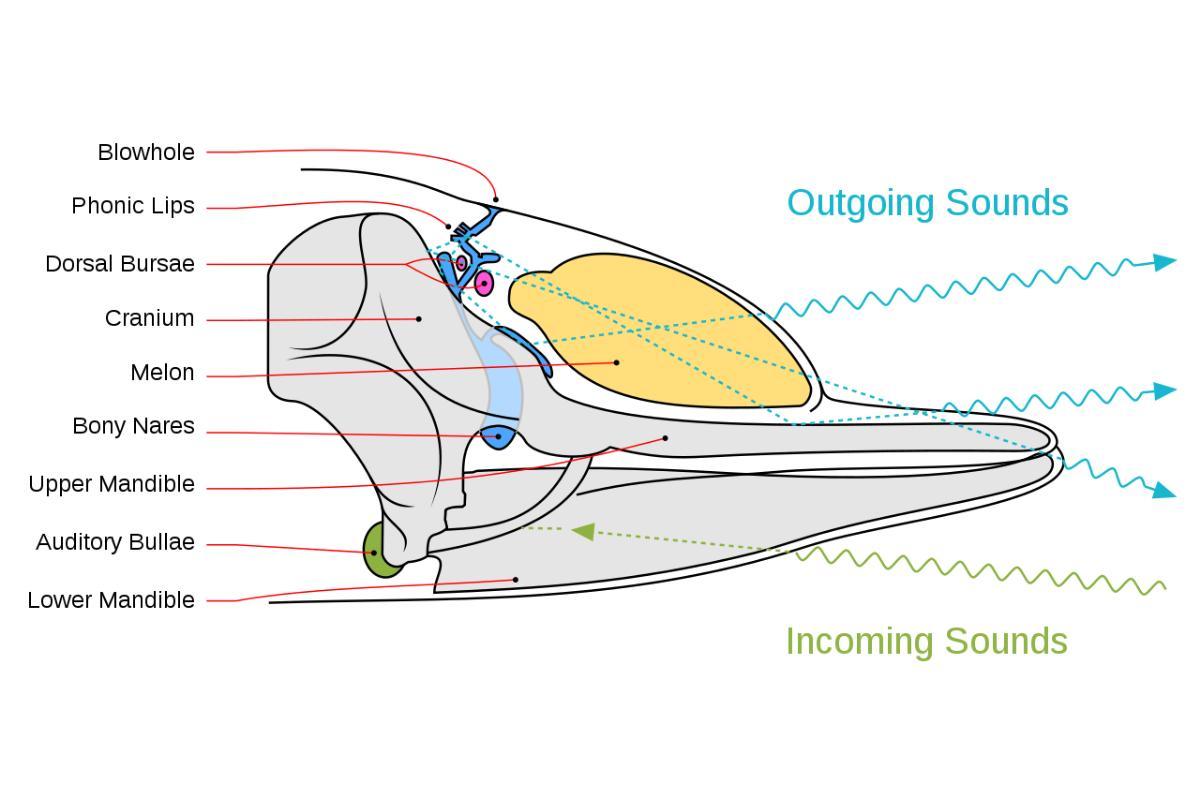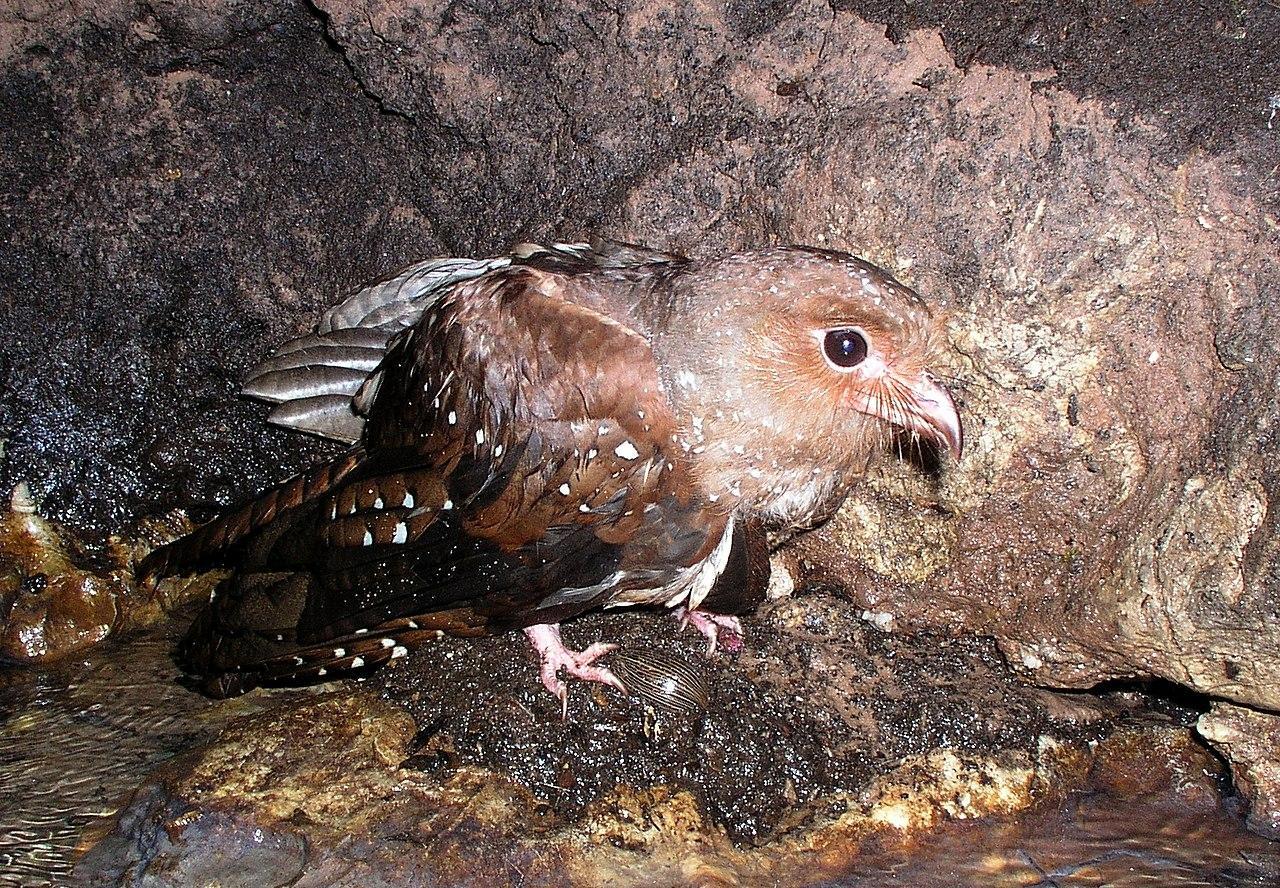What Is Echolocation and What Animals Use It?


Ever wondered how some animals navigate and hunt in the dark with seemingly superhuman precision? The answer lies in a remarkable adaptation called echolocation, a biological sonar that allows them to "see" with sound. From the fluttering wings of a bat to the graceful glide of a dolphin, echolocation powers a diverse array of creatures in the animal kingdom, granting them a unique sense of their surroundings.
This article from thedailyECO explores echolocation: its definition, how it works, its different types, and the animals that use it.
What is echolocation?
Echolocation isn't just enhanced hearing; it's a remarkable biological tool used by some animals to navigate and interact with their environment through sound waves. Unlike passive hearing, which simply detects sounds, echolocation involves actively emitting high-frequency sounds and interpreting the echoes that bounce back. This allows animals to:
- Determine distance: by analyzing the time it takes for the echo to return, animals can calculate the distance to an object with astonishing precision.
- Identify size and shape: the nature of the echo provides clues about the object's size and shape. For example, a smooth surface will reflect sound differently than a rough one.
- Detect movement: changes in the echo's frequency reveal whether an object is stationary or moving, and even its direction of movement.
- Locate prey and threats: echolocation helps predators like bats find insects in darkness and allows dolphins to hunt fish in murky waters. It can also warn animals of approaching danger, like a predator's footsteps.
This sophisticated system is crucial for animals living in environments where vision is limited.

Types of echolocation
Echolocation showcases diversity throughout the animal kingdom. Here's an examination:
- Frequency-modulated (FM) echolocation: this dominant technique, utilized by bats and dolphins, involves the emission of rapidly changing high-pitched sounds (frequency sweeps). Returning echoes unveil the size and distance of objects, enabling bats such as the greater horseshoe bat (Rhinolophus ferrumequinum) and dolphins such as the common bottlenose dolphin (Tursiops truncatus) to construct intricate mental maps, even in darkness.
- Constant-frequency (CF) echolocation: deployed by some dolphins like the harbor porpoise (Phocoena phocoena) and whales such as the sperm whale (Physeter macrocephalus), this method relies on a consistent tone. Variations in the returning echo's timing and intensity furnish information about object size, shape, and texture, facilitating precise foraging and hunting even in murky environments.
- Bi-frequency echolocation: a flexible amalgamation of FM and CF, this technique, observed in some dolphins and whales, combines both frequency sweeps and constant tones to generate a more detailed picture of the surroundings. This capability aids in navigating complex underwater structures and identifying hidden prey with exceptional accuracy.
- High-frequency echolocation: diminutive creatures like the short-tailed shrew (Blarina brevicauda) and certain bat species such as the tricolored bat (Perimyotis subflavus) employ this ultrasonic method, utilizing sounds beyond human hearing. These high-pitched squeaks provide precise information about close-range objects, proving ideal for hunting small insects or navigating confined spaces.
- Low-Frequency echolocation: giants like the blue whale (Balaenoptera musculus) and some dolphin species like the beluga whale (Delphinapterus leucas) rely on low-frequency sounds that travel further underwater. This ability facilitates long-distance communication and the detection of objects at impressive distances, thereby aiding in underwater communication and exploration.
The diverse forms of echolocation represent remarkable adaptations that empower animals to thrive in their specific environments.

How does echolocation work?
The basic principle of echolocation involves emitting sounds, usually in the form of clicks or vocalizations, and interpreting the returning echoes to gain information about the environment. Here's a breakdown of how echolocation works:
- Animals capable of echolocation produce specific sounds. These can be clicks, chirps, or other vocalizations that are often at frequencies beyond the range of human hearing (ultrasound).
- The emitted sound waves travel through the air or water, depending on the habitat of the echolocating species.
- When these sound waves encounter objects in the environment, they bounce back as echoes. The time delay, frequency shift, and intensity of the returning echoes carry valuable information about the distance, size, shape, and even texture of the objects.
- Specialized sensory organs receive the echoes. The animals process this information in their brains to create a mental map of their surroundings.
- Based on the feedback received through echolocation, animals can adjust their behavior accordingly. This includes avoiding obstacles, locating prey, navigating in the dark, and even identifying specific objects.
Each species that utilizes echolocation has adapted the technique to suit its specific needs and environmental challenges.
Bats
Bats, renowned for their echolocation abilities, emit ultrasonic calls and skillfully interpret returning echoes to navigate, hunt insects, and avoid obstacles in the dark. Their precise control over frequency modulation (FM) allows for effective navigation through complex environments, while the ability to detect and track prey through echolocation gives them a significant advantage in capturing insects during flight.
Different bat species have evolved unique echolocation strategies tailored to their ecological niches, showcasing the remarkable adaptability of these nocturnal mammals.
Learn more about flying mammals in this other article.

Dolphins and porpoises
Dolphins and porpoises, part of the cetacean family, employ echolocation as a vital tool for communication, navigation, and hunting underwater. Emitting clicks, they interpret echoes to create mental maps, facilitating precise navigation, prey detection, and social interactions. This showcases their remarkable adaptation to the challenges of life in the vast and dynamic ocean environments.

Moths
Certain moth species have indeed developed a unique defensive strategy to detect and evade predation by bats, which use echolocation for hunting. These moths have evolved ultrasonic hearing capabilities that allow them to perceive the echolocation calls of bats.
When a hunting bat emits ultrasonic calls to locate prey, these moths can detect the sound waves and take evasive action to avoid being captured. This remarkable adaptation is an example of coevolution, where the evolutionary pressures imposed by one species (bats) drive adaptations in another species (moths) to enhance survival.
You might be interested in this other article, where we discuss what parallel evolution is in biology.

Cave swiftlets
Cave swiftlets, particularly those belonging to the genus Aerodramus, exhibit nocturnal behavior and utilize echolocation for navigation and feeding in low-light conditions within caves. Their ability to emit clicks for echolocation is facilitated by specialized bronchiolateral muscles. These sounds assist them in navigating through dark cave environments and locating insects, their primary prey.
While cave swiftlets are notable for their echolocation capabilities, it's worth noting that they are not the sole birds with this ability. Other bird species, such as oilbirds (Steatornithidae), also use echolocation for navigation in dark environments.

Shrews
Shrews emit vocalized clicks, but unlike odontocetes and bats, they do not emit specialized waves. The echolocation of shrews is typically used at close range, often just beyond the length of their whiskers.
The primary purpose is to gather information about their immediate surroundings, helping them navigate and locate prey in their environment. While not as complex or specialized as the echolocation systems found in bats or dolphins, shrews have evolved this sensory mechanism to suit their needs in their specific ecological niche.

Other animals that use echolocation
For a wider understanding, let's look at some lesser-known echolocating animals.
- Beaked whales (family Ziphiidae)
- Beluga (Delphinapterus leucas)
- Killer whale (Orcinus orca)
- Porpoises (Phocoenidae family)
- Gray whale (Eschrichtius robustus)
- River dolphins (Platanistoidea)
Be sure to read this other article on what biological adaptation is.
If you want to read similar articles to What Is Echolocation and What Animals Use It?, we recommend you visit our Facts about animals category.
- Jones, G. (2005). Echolocation . Current Biology, 15(13), R484-R488.
- Helmenstine, A. (2018) How Bat Echolocation Works . Available at: https://www.thoughtco.com/how-bat-echolocation-works-4152159
- Guerrero Chamorro, C. (2015). Bottlenose dolphin: effects of ecotourism on echolocation. Available at: https://ddd.uab.cat/pub/tfg/2015/147548/TFG_cristinaguerrerochamorro.pdf
- Herrera, F. (2002) Echolocation in guácharos. Bol. Soc. Venezuelan Espeleol. (36).
- Siemers, B.M., Schauermann, G., Turni, H., & von Merten, S. (2009). Why do you shrews twitter? Communication or simple echo-based orientation . Biology letters, 5(5), 593-596.












